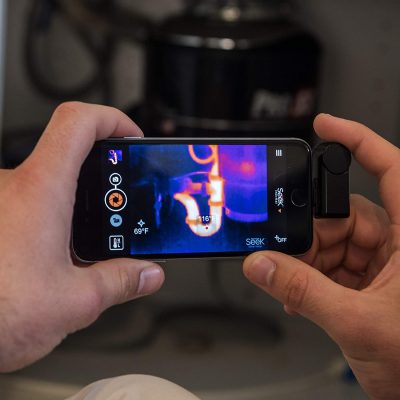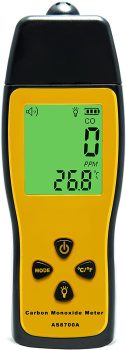Tools of the Trade
What you need and what it does
Home Inspectors carry and use a lot of gadgets to conduct thorough and detailed inspections. Each device in your bag has a purpose, and, in your hands, they go from simple gadgets to powerful tools that will help you examine and evaluate homes. This page focuses on the tools that we feel are perfect to get you started on your journey.
Flashlight
Flashlights are one of the most important tools in the home inspector arsenal. It is essential for illuminating hard to reach areas during an inspection and allows for more defined images when taking pictures for client reports.
Moisture Meter
Moisture meters can be used to detect the presence of water (moisture) during an inspection. Moisture within a home can come from a wide variety of sources like a roof leak, water pipes and other plumbing system issues. This detector can help an inspector pinpoint areas within a home which could potentially be a a haven for mold or wood destroying insects.
Multi Screwdriver
The most versatile tool in the Inspector tool bag is the Multi-Screwdriver. This 11-in-1 is the perfect tool to gently remove Flat, Philips, Torx, Square and Hex head screws when performing an inspection.
Electric Driver
An electric driver is a great tool to have in your bag for instances where speed is a factor. Having an electric driver handy can shorten the overall time of an inspection when having to remove screws that are too tight for a handheld screwdriver.
Voltage Indicator
Non-contact voltage indicators are devices that allow you to test open wires and other electrical equipment to determine if it’s “Live” (has electricity flowing). This tool is essential in making sure an inspector does not get electrocuted by wires such as those commonly found in open splice boxes.
Tool Bag
A tool bag is essential to the home inspector as it is important to keep all the necessary tools in one place. Since an inspection requires a variety of tools, this bag will make it easier to move around the property with ease and efficiency.
Boot / Shoe Covers
Boot / Shoe covers are the most respectful way to enter the property that is being inspected. As a home inspector it is your job to enter and leave the property without a trace and these shoe covers ensure no dirt from the outside is brought into the home.
Infrared Camera
IR cameras are helpful gadgets to determine differences in temperature on surfaces within a home. These temperature differences could be due to voids or gaps in insulation or they can indicate a wet area on a wall or ceiling.
CO Detector
CO (Carbon Monoxide) is a colorless and odorless fume created by heating systems and other combustion appliances. This helpful device can detect the slightest amount of CO in a home. As a home inspector it is important to make note if these harmful fumes are present.
Gas Detector
Gas leaks are dangerous and sometimes hard to find. As a home inspector it is important to accurately determine the presence of gas leaks in items such as kitchen appliances, water heaters and furnaces.
Infrared Thermometer
An infrared thermometer is perfect for reading temperatures produced by HVAC units and domestic hot water systems. These devices shoot a non-visible beam and can quickly determine fluctuations in temperature, be it by forced air through a vent or water from a faucet.
Probe
A probe is a tool with a blunt end that helps determine how hard or soft a material is. It can be mounted on an extendable pole for hard to reach places and helps the home inspector determine if a material has rotted away from moisture or wood destroying insects.
GFCI Tester
A GFCI tester is another essential tool for a home inspector. This particular tool helps determine whether or not an outlet is correctly wired. If the outlet is GFCI protected this gadget will allow the inspector to set it off for testing purposes.
Telescoping Mirror
Telescoping mirrors are a handy tool to have for those hard to reach places. These types of mirrors are compact and when coupled with a flashlight can extend a home inspector’s ability to properly asses fairly inaccessible locations.














